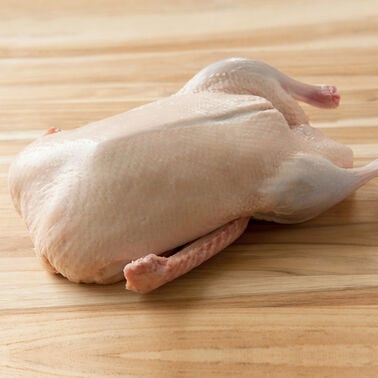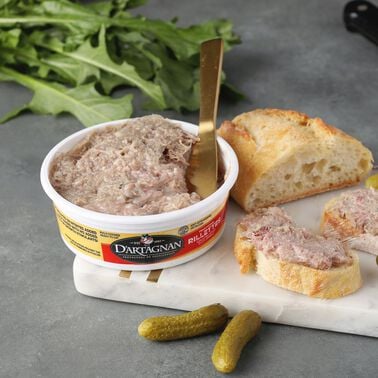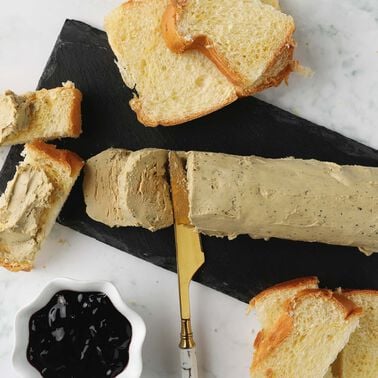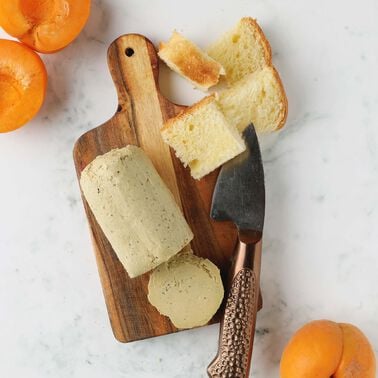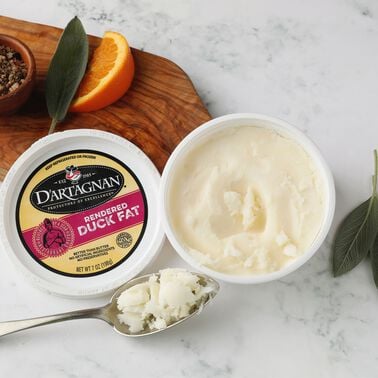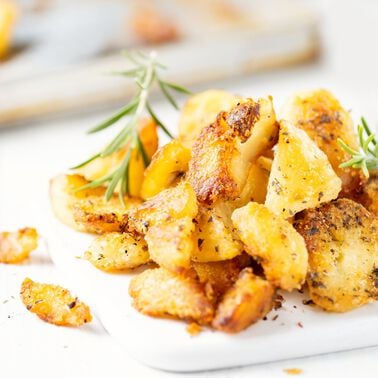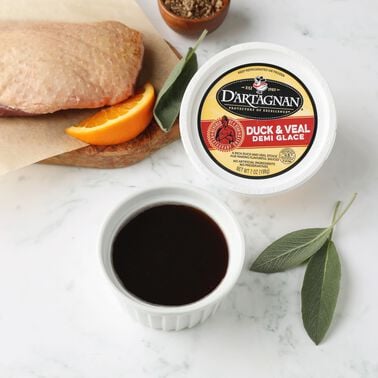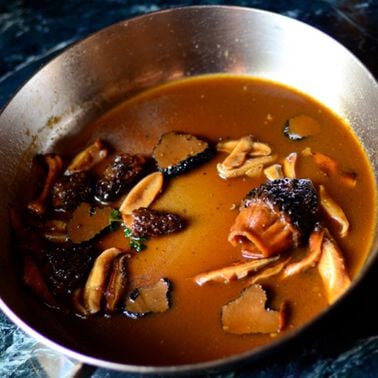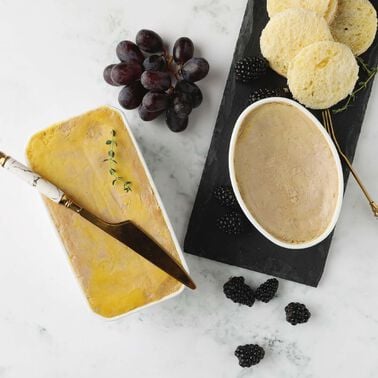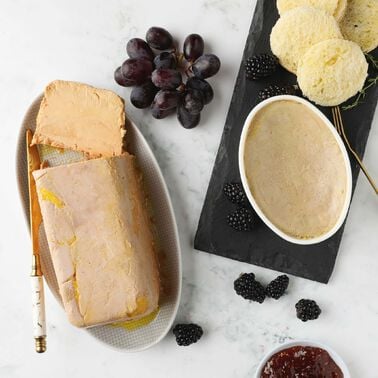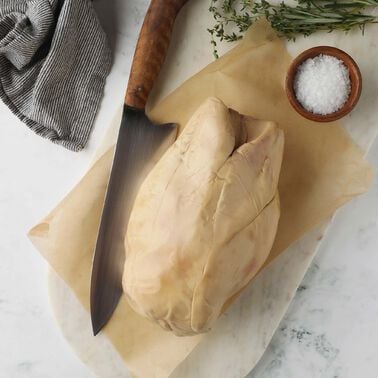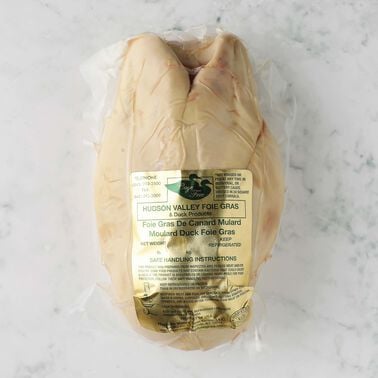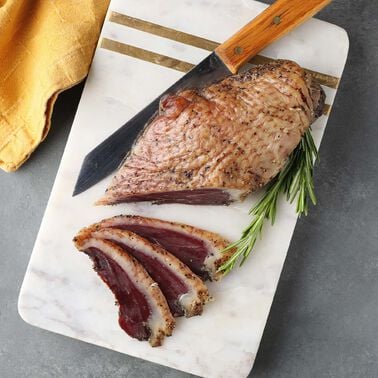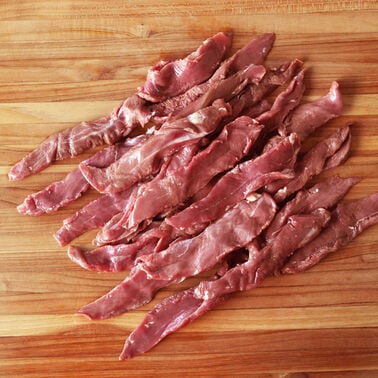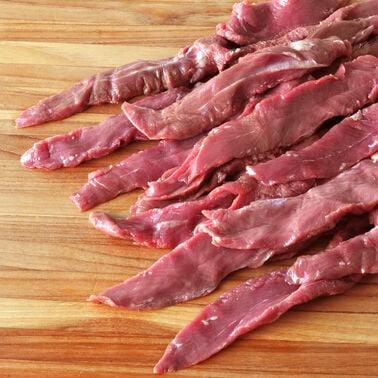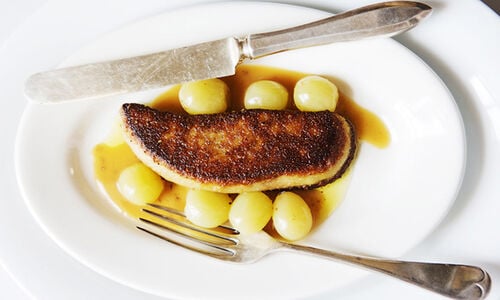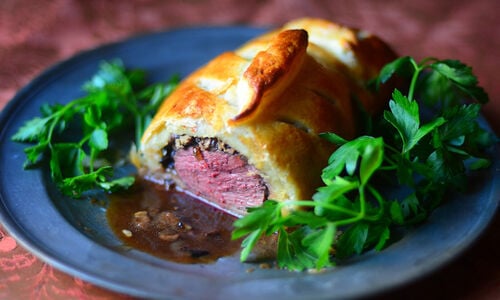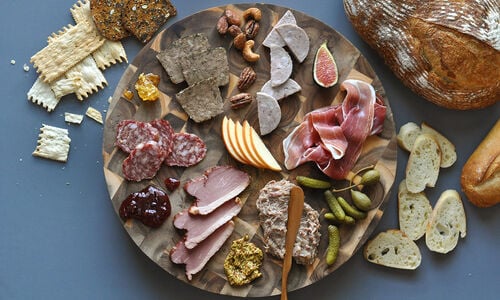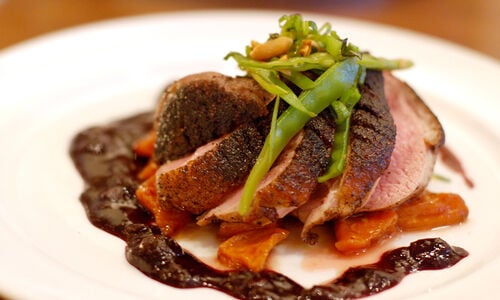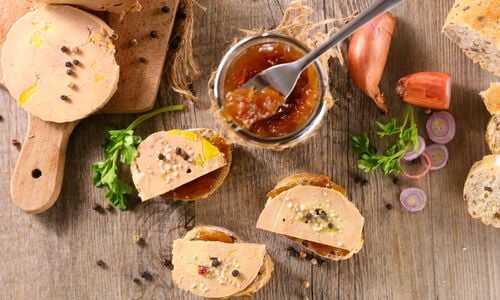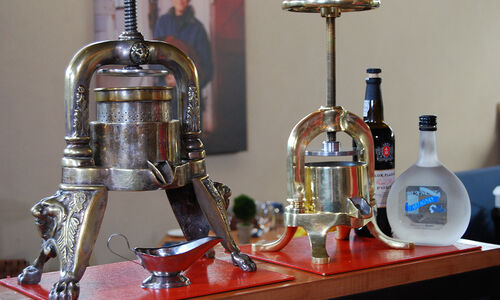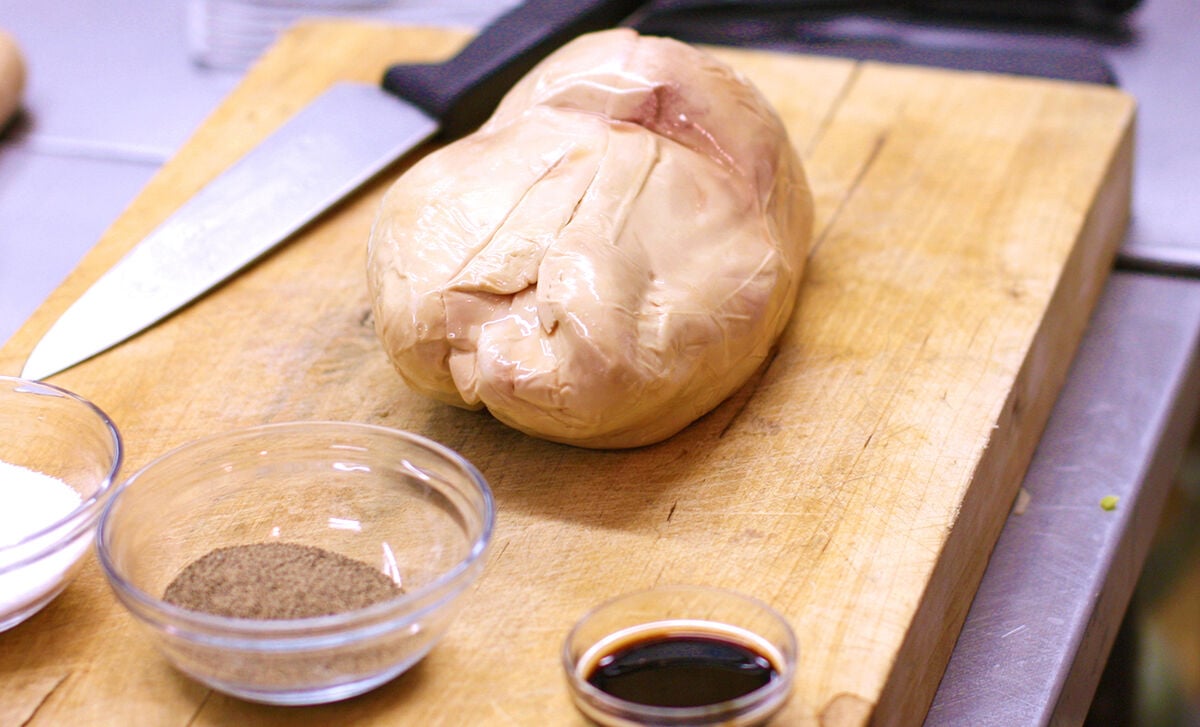
At D’Artagnan the nose-to-tail concept is not new. Our charcuterie line is based on traditional recipes that Ariane learned in Southwest France. And the motto “Everything but the Quack” could have appeared in the company logo.
Below are some suggestions of what can be made from the entire duck carcass.
What to Make with Duck Drumsticks & Thighs
Duck rillettes. Duck meat is chopped, salted and then simmered in an aromatic stock until the meat naturally shreds and falls off the bones. Cooled with enough fat to form a paste; used as a spread on bread or toast, served at room temperature.
Duck Terrine Mousquetaire. A classic country-style terrine enhanced with prunes and Armagnac. First, the duck is deboned then the meat is ground with spices and finally cooked as a terrine.
Duck leg confit. Whole legs are cured in salt and spices then slowly cooked in duck fat.
Duck sausage with Armagnac. A must in garbure and cassoulet, also great simply grilled.
What to Make with Duck Breasts and Wings
Fresh magret. Fresh, raw duck breast can be seared like a steak and served rare. Marinated duck magret offers succulence and flavor with none of the work.
Duck prosciutto. Individual breasts cured in salt and herbs, then hung to slowly dry, while constantly being brushed with olive oil.
Smoked duck breast. Seasoned only with salt and cracked pepper, the breasts are hot smoked very slowly over hickory chips.
What to Make with Duck Bones
Demi-glace. Rich dark and concentrated stock. Bones give it the collagen necessary for gelatinous texture, and the 3 days of cooking time naturally concentrates flavor.
What to Make with a Whole Deboned Duck
Duck galantine. A deboned whole duck is stuffed with a mixture of ground meat, pressed into a cylindrical shape and poached.
What to Make with Duck Skin
Rendered duck fat. The “butter” (but better) of Gascony can be used to cook everything: eggs, vegetables, wild mushrooms, potatoes, meat, and even a dessert, the pastis Gascon.
Duck cracklings. This is what’s left when you render fat. These crispy bits of fried skin are delicious when salted and eaten straight out of the pan; they are only good when freshly made.
What to Make with Duck Giblets
Gizzards. Delicious when confited and then sliced warm in salads. Heart. Skewered with cèpes (porcini) and grilled, they are the fast food of Gascony.
“White olives” or “white kidneys.” Found only in male ducks, they are seared in duck fat for maximum flavor, also can be skewered as the hearts.
What to Make with Duck Tenders
Duck tenders come from the duck breast and are little filets easily removed by hand. Sear or grill them quickly. Glaze with balsamic or make a pan sauce to accompany. Bread duck tenders and fry them like chicken nuggets.
Make brochettes: roll a single duck tender with a strip of zucchini cut lengthwise and skewer along with a cherry tomato, then grill quickly. Alternately, wrap a duck tender around a chunk apricot or peach before grilling.
What to Make with Foie Gras
Raw foie gras. These enlarged, fatty duck livers weigh 1 to 2 pounds, and can be sliced and seared, or prepared as a terrine or torchon. Foie gras is a versatile ingredient which is revered in gastronomy the world over. Also available in a two-slice package for an easy first course.
Terrine of foie gras. The purist preparation of foie gras; the entire liver is cooked at low temperature in a terrine mold with a minimum of ingredients: salt, pepper, Sauternes wine. Served cold.
Medallion of foie gras. Creamy foie gras mousse enhanced with black truffles. An elegant hors d’oeuvre spread on baguette slices.
